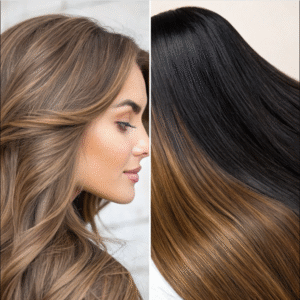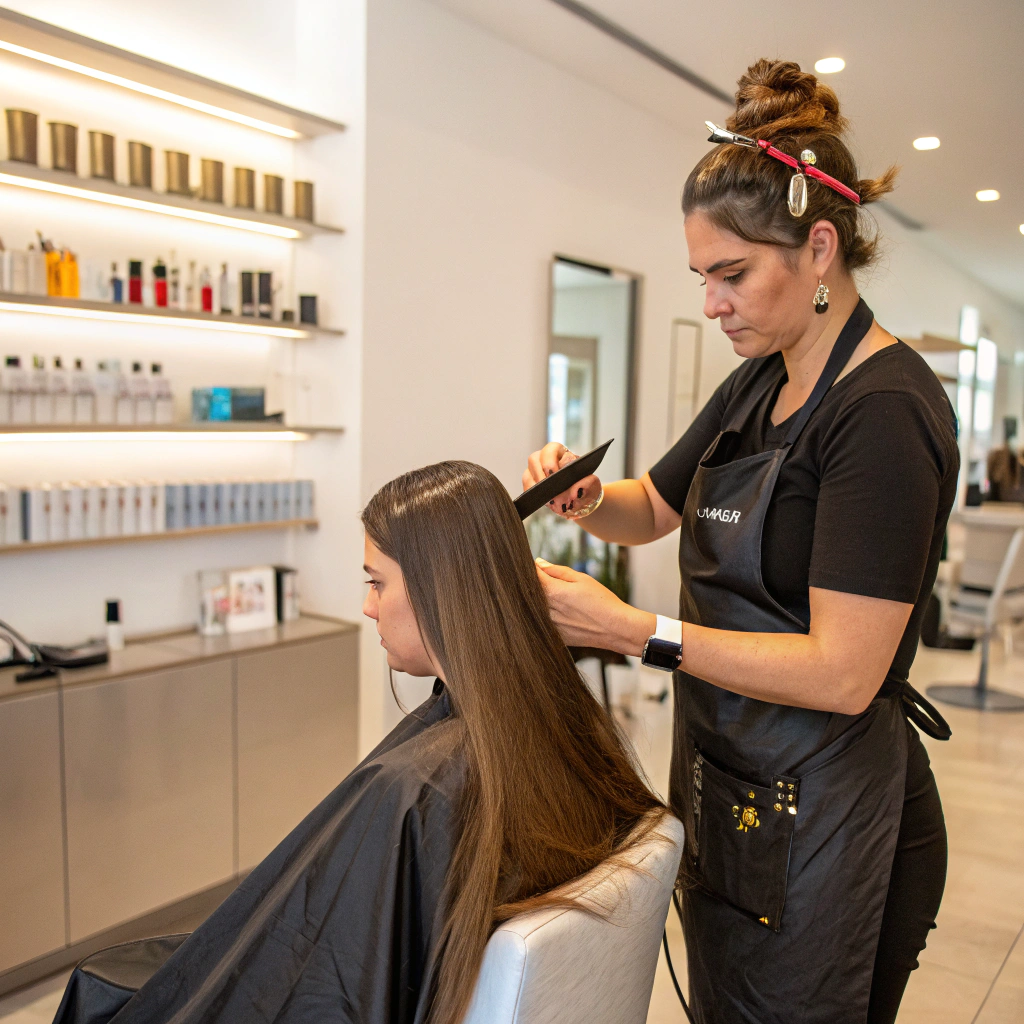Materials Matter: Navigating Hair Extensions for Salons
Hair extensions for salons are primarily available in two material types: human hair and synthetic hair. Human hair extensions offer a natural look and feel, allowing for versatile styling and coloring. Synthetic hair extensions, while more affordable, may not blend as seamlessly and have limitations with heat styling and coloring. As a salon owner, you know that the right extension choice can make or break a client's experience. Let's dive into what materials are commonly used, so you can make informed decisions for your business.
What Materials are Commonly Used for Hair Extensions?
From my journey with Plucharm Hair, a top-tier hair product manufacturer based in Shandong, China, I've seen firsthand how the choice of hair extension materials can significantly impact the end result. Here’s a closer look at the common materials and why they matter.
Human Hair1 vs. Synthetic: The Essentials
-
Human Hair1: Authenticity at its finest. It offers the freedom to style and color, which means your clients can walk away with a customized look that complements their unique style.
-
Synthetic Hair2: This is the budget-friendly option but comes with trade-offs. While it offers a variety of pre-set styles and colors, you're limited in how much you can alter them. These extensions often encounter issues when exposed to high temperatures.
Dive Deeper: Why Material Matters
Choosing the best material is more than just a financial decision; it's about meeting your client's expectations and maintaining your salon's reputation. Human hair extensions provide a seamless blend, especially when sourced from reputable suppliers like Plucharm Hair, who use 100% virgin hair. This might sound like a commercial, but trust me—when I saw how their products withstand heat and hold color, I knew I had to share these insights.
Synthetic extensions, on the other hand, are a good fit for clients looking for temporary change or for those not yet ready to invest in premium options. However, lack of flexibility in styling and potential for unnatural shine can be drawbacks. Plucharm's synthetic line, though, offers an unrivaled matte finish that cuts down on that glossy, "plastic" look.
Here is a table that compares the two materials:
| Feature | Human Hair1 | Synthetic Hair2 |
|---|---|---|
| Styling Flexibility | High | Low |
| Heat Resistance | Yes | Limited |
| Cost | Higher | Lower |
| Longevity | Long-lasting | Shorter lifespan |
| Natural Look | Blends seamlessly | May appear shinier |
What Six Materials Are Most Commonly Used for Hair Extensions?
When we dive deeper into hair extensions, human hair and synthetic are the broad categories, but let's explore specific materials within these categories.
Natural Options
- Virgin Hair3: Pure, untreated, and maintains its cuticle. It's the crown jewel for any salon committed to high quality.
- Remy Hair4: Ensures cuticles are aligned, reducing tangling and increasing longevity.
Synthetic Options
- Kanekalon5: Known for its quality and realism, though it's pricier than traditional synthetic fibers.
- Hot Water Set Synthetic6: Offers versatility in holding new styles post-application of heat.
- Toyokalon7: Soft and lightweight, known for its durability.
- Fiber Fusion Blends: Combines synthetic with a small percentage of human hair for a more natural appearance.
Dive Deeper: Navigating Material Choices
The choice between these materials ultimately boils down to your salon's needs and your client's desires. As Plucharm Hair shows, offering a range of high-quality materials allows salons to cater to diverse markets—from high-end bespoke solutions to budget-savvy quick changes. Their mastery in using virgin hair, for instance, distinguishes their products, ensuring that every client leaves satisfied with a natural, long-lasting look.
What Types of Hair Extensions Are There?
Extensions come in many forms, each having its special features. As someone who's seen the evolution of these products, I can attest to the leaps and bounds the industry has made.
Types of Hair Extensions
- Clip-ins: Suitable for temporary changes. Clients love their ease of use.
- Tape-ins: Known for their seamless application and retention.
- Micro-link8: Offers durability but requires careful application and maintenance.
- Weft9: Versatile and often used for weaves.
- Glue-ins: Offers a long-term solution, though they require careful removal.
- Halo Extensions10: Great for those who want volume without long-term commitment.
Dive Deeper: Tailoring to Client Needs
Understanding each type allows you to recommend the best option for your clients. Plucharm Hair offers extensive training materials to help salons understand and implement these extensions effectively. You’re not just adding hair; you’re adding confidence and style tailored to each person.
What's the Healthiest Type of Hair Extension?
If you've asked yourself, "Are these extensions safe for my client's natural hair?" you're not alone. The healthiest choices often blend minimal damage with maximum style.
Prioritizing Hair Health
- Clip-ins and halos: Least invasive as they don't require adhesives or heat.
- Tape-ins: Safe if not applied too tightly and are renowned for their distribution of weight.
- Micro-link8s: Can be gentle if applied correctly; however, regular adjustments are essential.
Dive Deeper: Keeping Hair Healthy
Healthy hair extensions mirror the health of the person wearing them. With Plucharm Hair’s dedication to quality control, their products ensure minimal shedding and tangling while prioritizing the user's health. This means less damage over time and happier clients who will return knowing their natural hair is respected and preserved.
Conclusion: A Journey in Confidence and Quality
Navigating the world of hair extensions can be overwhelming, but making informed choices regarding materials, types, and application methods will elevate your salon's reputation. With suppliers like Plucharm Hair, who are as committed to quality as they are to your business success, you can rest assured that providing the best experiences for your clients starts with selecting the right extensions. By understanding the nuances and dedicating yourself to excellence, your salon can not only meet but exceed your client’s expectations.
Ultimately, achieving the perfect extension for each of your clients doesn’t just improve their look; it builds their confidence, which is priceless.
-
Explore the advantages of Human Hair extensions for a natural look and versatile styling options. ↩ ↩ ↩
-
Learn about the affordability and limitations of Synthetic Hair extensions to make informed choices. ↩ ↩
-
Discover why Virgin Hair is the top choice for high-quality hair extensions. ↩
-
Understand the benefits of Remy Hair for longevity and reduced tangling. ↩
-
Find out why Kanekalon is favored for its quality and realistic appearance. ↩
-
Learn about the versatility of Hot Water Set Synthetic extensions for styling. ↩
-
Explore the softness and durability of Toyokalon hair extensions. ↩
-
Explore the durability and maintenance of Micro-link extensions. ↩ ↩
-
Find out how Weft extensions can be versatile for various styles. ↩
-
Discover the benefits of Halo Extensions for volume without commitment. ↩



